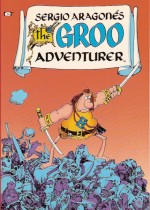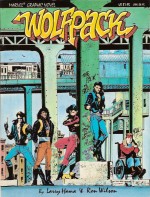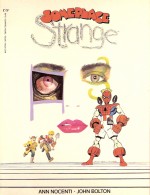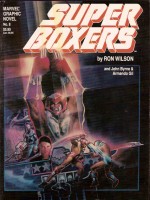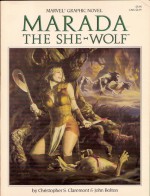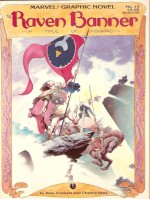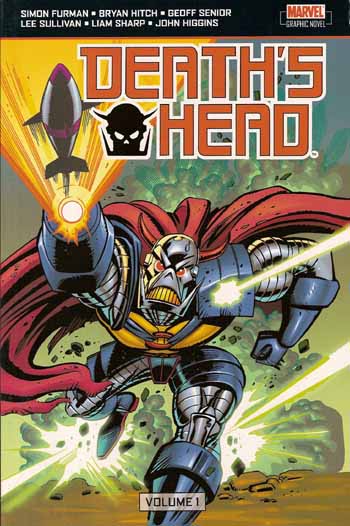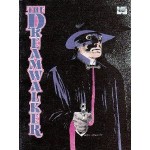
By Bill Mumy, Miguel Ferrer & Gray Morrow (Marvel)
ISBN: 0-87135-550-7
Once upon a time Marvel led the publishing pack in the development of high quality original graphic novels: mixing creator-owned properties, licensed assets like Conan, special Marvel Universe tales and even new series launches in extravagantly expanded packages (a standard page size of 285 x 220mm rather than the now customary 258 x 168mm) that felt and looked like far more than an average comicbook no matter how good, bad or incomprehensible (a polite way of saying outside the average Marvel Zombie’s comfort zone) the contents might be.
By 1990 Marvel’s ambitious line of all-new epics had begun to falter and some less-than-stellar tales were squeaking into the line-up. Moreover, the company was increasingly resorting to in-continuity stories with established – and company copyrighted – characters rather than creator-owned properties and original concepts and hastily turned out movie tie-ins became a regular feature. The line began to have the appearance of an over-sized, over-priced clearing house for leftover stories.
Not that that necessarily meant poor product, and for many stories the luxuriant page dimensions, paper and colouring were truly effective enhancements as this intriguing pastiche of pulp hero Mystery-Men thriller proves. Owing – and enjoyably repaying – a huge debt to the likes of The Shadow, Green Hornet and The Spider, Dreamwalker is the convoluted introductory story of burned out CIA fixer and go-to-guy Joshua McGann, who after 16 distinguished, conscience-free years of service quits the Agency and goes rogue.
After nearly two years he returns home just as his father and step-mother are murdered by a mob-boss. Investigating further he discovers that his dad – a silent movie star – was once an actual masked crime fighter named The Dreamwalker who cleaned the streets of criminal scum in between takes. Swearing vengeance Joshua revives his sire’s masked identity to catch the killers but quickly finds himself the target of every assassin in the business.
Not only has he made the gangster’s “must-kill†list but his old CIA boss wants him back or wants him dead…
This choppy, fast-paced yarn reads like the pilot for a TV series (and perhaps it was; writers Mumy and Ferrer were well-established in Tinseltown long before they began writing funny-books) whilst the brilliant Gray Morrow used his uncanny ability to capture likenesses to pepper the lush painted artwork with the faces of many famous actors including Mel Ferrer, Buster Keaton, Ed Asner, Dean Martin, James Stewart and others: a true dream cast. The capable underplayed letters are provided by Rick Parker.
Cloaked, masked avengers are a mainstay of both comics and the screen and this yarn, as McGann achieves his bloody goals and begins a new career, is a delightfully readable romp that I for one would happily have followed whether in four-colour pages or on TV. As it is, however, all we’ve got is this sharp-shooting, vigorously vicarious lost gem and that in itself will have to suffice. Uncomplicated, old-fashioned fun, and you just can’t beat that…
™ & © 1989 Bill Mumy, Miguel Ferrer and Gray Morrow. All Rights Reserved.

